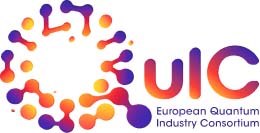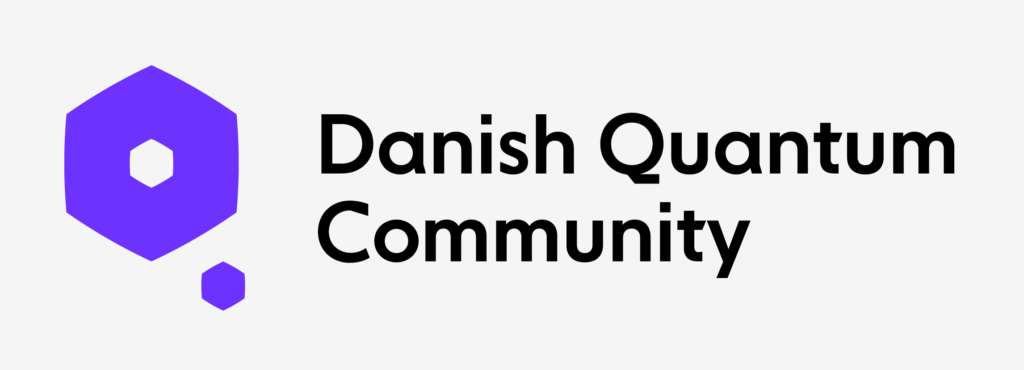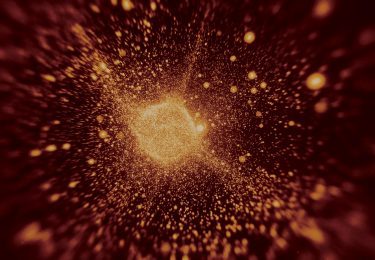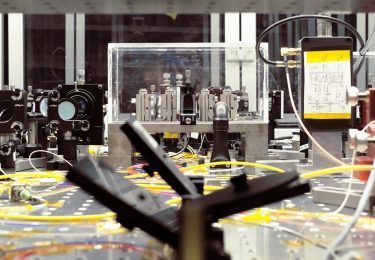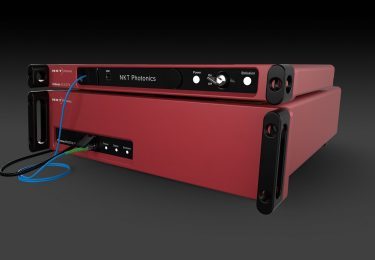Quantum computers are one of the most groundbreaking technologies of our time. And lasers play a crucial role in quantum computing by cooling and trapping atoms to create stable qubits.
Narrow linewidth and high power stability are essential for precise control, while fiber delivery ensures consistent beam quality. Koheras lasers offer the required wavelength coverage, scalability, and reliability for advanced quantum applications.
Using lasers for quantum computing
Cold-atom systems are among the leading candidates for quantum computers. Lasers can cool atoms down and trap them in place using advanced techniques like Doppler cooling and dipole trapping.
These cold atoms can then be manipulated, entangled, and read with more advanced lasers and imaging techniques, creating high-quality qubits in quantum computers.
Quantum computers can perform operations far beyond what classical computers can handle. They will become crucial for applications like drug discovery, financial optimization, supply chain management, and solving fundamental scientific problems.
Pick the right laser
When picking a laser for atom trapping, cooling, and manipulation, there are several things to consider:
Why narrow linewidth and power stability matter
When you’re choosing lasers for trapping, cooling, and manipulating atoms, two key factors stand out: Narrow linewidth and power stability.
Linewidth refers to the width of the laser’s frequency spectrum. Phase noise in the system causes the linewidth to expand. The linewidth has a big impact on how well your cooling and manipulation techniques work.
In Doppler cooling, for instance, the linewidth must be much smaller than the atom’s natural linewidth. If the laser’s linewidth is too broad, it limits the cooling efficiency and the precision of your experiments.
Power stability refers to a laser’s ability to maintain consistent power over time without fluctuations. Power stability is essential for maintaining consistent cooling rates and ensuring that your experiments are reproducible. Intensity fluctuations, or relative intensity noise (RIN), can add unwanted heat to your system and limit cooling effectiveness.
Our fiber lasers are engineered to meet these demanding requirements. They’re thermally and mechanically isolated to minimize power fluctuations. With linewidths in the 1-100 Hz range, our lasers are the narrowest available.
Wavelength coverage for versatile quantum computing
Quantum computing requires lasers that can cover a wide range of wavelengths, from the ultraviolet (UV) to the infrared (IR). Different atomic species have specific transitions in these regions. To explore their potential, you need access to these wavelengths.
Our Koheras fiber lasers offer broad wavelength coverage, covering important UV, visible, and IR wavelengths, including those necessary for ion and neutral atom-based quantum computers. This flexibility allows you to explore a wide range of atoms and develop more robust quantum systems.
Fiber delivery for reliable light transmission
When it comes to quantum computing, especially when scaling systems, reliable light delivery is essential. Our fiber-coupled lasers reduce power losses and maintain high beam quality over long distances.
Our fiber lasers are inherently single-mode, stable, and mode-hop-free, which is key for high-precision quantum applications. By combining these features with our photonic crystal fiber technology, you get reliable delivery of high-power, narrow-linewidth light without compromising beam stability.
Whether you’re rack-mounting your laser system or using it in a tabletop setup, our aeroGUIDE POWER fiber delivery system offers the flexibility you need for seamless light delivery.
It’s designed to transport light at all power levels with unmatched beam stability. The system ensures that, regardless of your setup, you get precise and consistent light delivery for your quantum experiments.
So if you want to mount the laser system in a rack, it is not a problem. With our unique fiber delivery system, aeroGUIDE POWER, you can get light wherever you want.
Scalability & industrial reliability
With over 20 years of experience and more than 20,000 single-frequency fiber lasers deployed globally, our systems are designed for scalability and reliability.
We’ve engineered our lasers to meet the toughest industrial demands, offering an exceptional mean time between failures of >30 years, making them ideal for long-term, high-volume applications in quantum research.
Our Koheras HARMONIK is designed specifically for trapping and cooling atoms in quantum applications.
The HARMONIK offers everything you need for demanding quantum experiments – from cooling atoms to manipulating qubits, all with unbeatable reliability.

How do you make cold atoms?
When you want to cool and trap atoms with lasers, you need to know that – at the atomic scale – temperature makes atoms wiggle around. Reducing their movement is the same as reducing their temperature. You can cool atoms by carefully matching your atom with a laser that can emit light with the properties needed to cool that specific atom.

To cool an atom, you make it absorb energy only when it randomly moves towards the laser. After a short while, the atom begins to reemit the absorbed light in random directions. On average, this makes the atom slow down in the direction of the laser because it loses net kinetic energy in that direction.
Now you add a beam in all three dimensions, and the atom will be forced to slow down in all directions. This technique lets you cool the atom down to well below 1°K, depending on the type of atom.
The goal is to make the atom absorb light only when moving in a specific direction. Atoms can only absorb light if the light is oscillating at one of the discrete frequencies allowed by the atom. For rubidium, one of these frequencies corresponds to light with a wavelength of 780 nm. If the wavelength is longer, the rubidium atom will not absorb it.
In a laser Doppler cooling system, the wavelength of the laser must be slightly longer than required for absorption. When the atom moves toward the laser, the Doppler effect will cause the atom to experience the laser as emitting light at a shorter wavelength due to the Doppler effect. The atom will absorb a photon.
When moving away from the laser source, the atom experiences the wavelength as longer and nothing happens. You can use a magneto-optical trap (MOT) to shoot light at the atom from both directions and in all three dimensions. This cools rubidium atoms down to a few µK and they are ready to be put to work.
In some systems, the atoms are transferred to other laser cooling systems to lower the temperature further before they are used.
Our quantum engagements
We are part of the European Quantum Flagship, the European Quantum Industry Consortium, the Quantum Economic Development Consortium, and the Danish Quantum Community.




